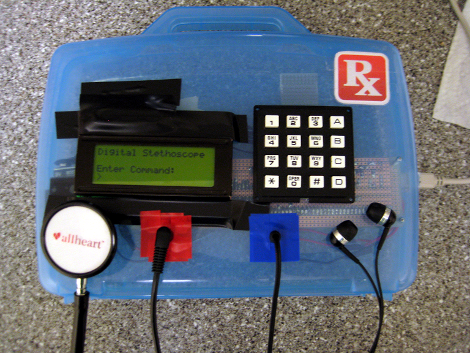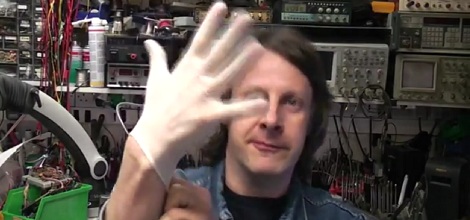
It’s somewhat amazing how these rather inexpensive electronics can augment the functionality of a common stethoscope. This digital stethoscope is using audio processing to add the features. A standard chest piece feeds a condenser microphone which is fed through a pretty standard OpAmp circuit which supplies the ADC of an ATmega644. After being digitized, the heart sound can be recorded in ten second increments to a 1 Mb flash memory chip. The data can also be fed to MATLAB via a USB cable in real-time. There it is displayed as a waveform and the heart rate is calculated on the fly. Check out the video after the break for a great demo of the system.
The picture above shows a set of ear buds used as output. But this is a standard headphone jack, so the heart sounds can be played on speakers which we think would come in handy for teaching purposes. There’s also the option to hook it to a computer input which could be the audio used for a Skype session if a doctor is not close at hand. There is lots of potential here at a fairly low cost and we love that!
Continue reading “Digital Stethoscope Can Record, Playback, And Analyzer Heart Sounds”
















